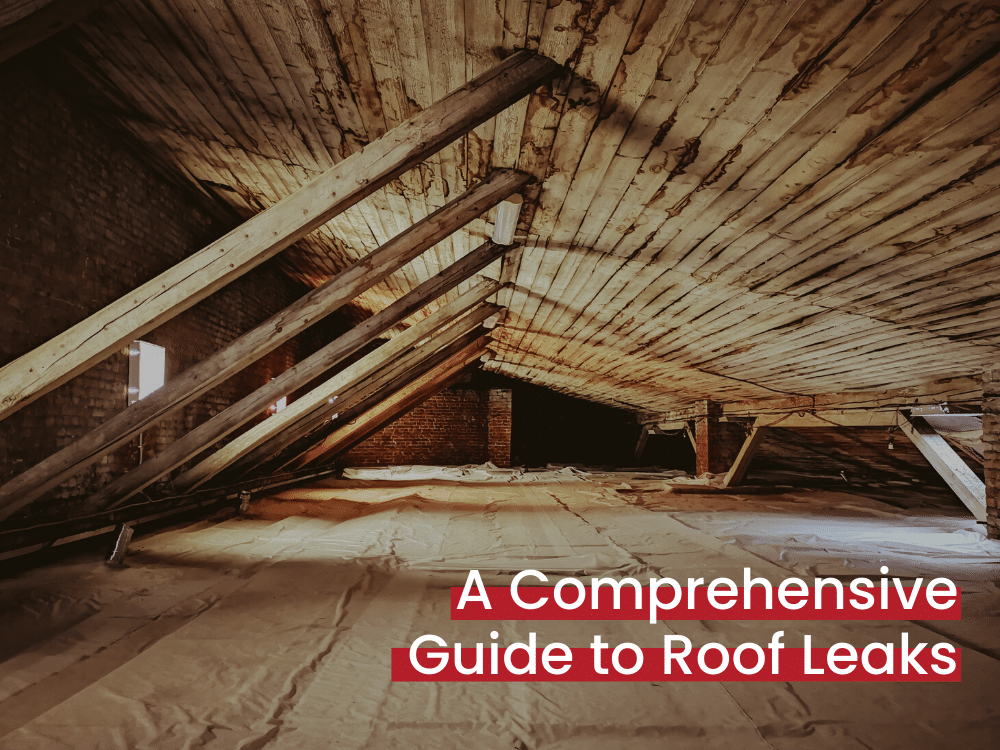Have you recently had your roof repaired, only to find that it is still leaking? It can be frustrating and confusing to invest time and money into fixing a problem, only to have it persist. In this article, we will explore the possible reasons behind why your roof may still be leaking after repair, and provide helpful insights on how to address this issue.
Common Causes of Roof Leaks
Missing or Damaged Shingles
One of the most common causes of roof leaks is missing or damaged shingles. Shingles provide a protective barrier against water and other elements, so when they are compromised, water can easily find its way into your home. Whether it’s due to age, storm damage, or poor installation, missing or damaged shingles need to be addressed promptly to prevent further leaks.
Improperly Installed Flashing
Flashing is an important component of your roof’s waterproofing system. It is designed to redirect water away from vulnerable areas such as vents, chimneys, and skylights. If the flashing is improperly installed or damaged, water can seep through the gaps and cause leaks. It is essential to ensure that the flashing is installed correctly and in good condition to prevent roof leaks.
Clogged Gutters and Downspouts
Another common cause of roof leaks is clogged gutters and downspouts. When leaves, twigs, and other debris accumulate in your gutters, water cannot flow freely, resulting in overflowing gutters. This can lead to water pooling on your roof, seeping into the shingles, and eventually causing leaks. Regular gutter cleaning and maintenance are crucial to prevent this issue.
Cracked or Damaged Vent Booting
Vent booting is a component that seals the area around vents on your roof, preventing water intrusion. Over time, the vent booting can crack or deteriorate, leading to leaks. It is important to inspect and replace damaged vent booting promptly to maintain a watertight roof.
Damaged Chimney or Skylight
Chimneys and skylights can also be sources of roof leaks if they are damaged or improperly sealed. Bricks can deteriorate, flashing can become loose, and seals can degrade over time. Regular inspection and maintenance of chimneys and skylights are necessary to prevent water penetration and subsequent leaks.
Defective Roofing Materials
Sometimes, roof leaks can be attributed to defective materials. Poor-quality shingles, underlayment, or flashing can fail prematurely, causing leaks. It is crucial to choose high-quality roofing materials from reputable manufacturers to ensure the longevity of your roof and prevent leaks.
Improper Installation
Even the best-quality materials can fail if they are not installed correctly. Improper installation of roofing materials, flashing, or ventilation components can create vulnerabilities in your roof system, leading to leaks. Hiring a professional roofing contractor with experience and expertise in proper installation techniques is vital to avoid this issue.
Lack of Maintenance
Neglecting regular roof maintenance can also contribute to roof leaks. Over time, small issues, such as cracked shingles or damaged flashing, can escalate into more significant problems if left unaddressed. Regular inspections and prompt repairs are essential to catch and fix potential issues before they turn into leaks.
Inadequate Roof Pitch
The pitch or slope of your roof plays a crucial role in directing water away from your home. If your roof has inadequate pitch, water can pool and eventually find its way through weak spots in the roofing materials. Ensuring that your roof has the appropriate pitch for your geographic location and weather conditions can help prevent leaks.
Ice Dams
In colder climates, ice dams can be a common cause of roof leaks. Ice dams form when snow on the roof melts and refreezes near the edges, creating a barrier that prevents proper drainage. The trapped water can then seep into the roof and cause leaks. Proper insulation, ventilation, and regular removal of snow from your roof can help prevent ice dams and the subsequent leaks.
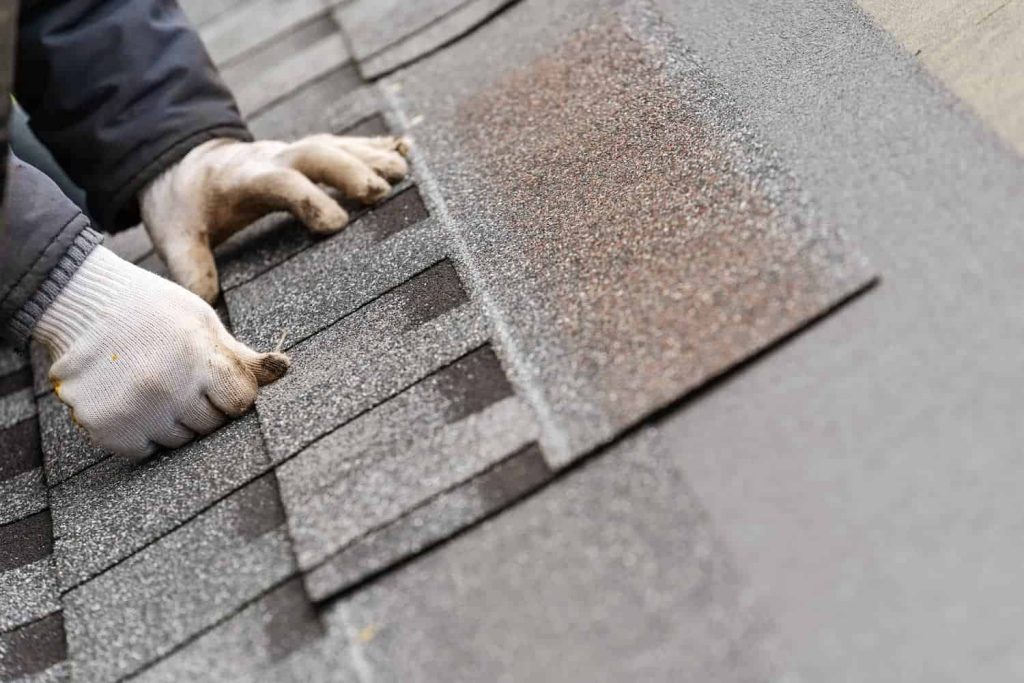
Signs of a Leaking Roof
Water Stains on Ceiling and Walls
One of the most obvious signs of a leaking roof is the presence of water stains on your ceiling and walls. These stains may appear as discolored patches or circular patterns and are often accompanied by a musty odor. If you notice water stains, it is essential to investigate the source of the leak promptly.
Dripping Water or Puddles
If you observe actual water dripping from your ceiling or notice puddles forming on the floor, it is a clear indication of a roof leak. These leaks may occur during or after heavy rainfall, and they should not be ignored. It is crucial to address the issue as soon as possible to prevent further damage to your home’s interior.
Mold and Mildew Growth
Excessive moisture from roof leaks can create the perfect environment for mold and mildew growth. If you notice any black or green patches on your walls, ceilings, or in the corners of your rooms, it could be a sign of a leaking roof. Mold and mildew not only pose health risks but can also cause structural damage if left untreated.
Musty Odor
Another sign of a leaking roof is a persistent musty odor in your home. This odor is often caused by mold or mildew growth resulting from prolonged exposure to moisture. If you notice a musty smell, especially after rainfall, it is important to investigate the source of the leak and take appropriate measures to fix it.
Uneven or Sagging Roof Deck
A roof leak can weaken the structural components of your roof, causing it to sag or become uneven. If you notice any irregularities in your roof’s surface or if it appears to sag in certain areas, it may be an indication of underlying water damage. It is crucial to address these issues promptly to prevent further damage and potential collapses.
Peeling Paint or Wallpaper
Water infiltration from a leaking roof can cause paint and wallpaper to peel or bubble. If you notice these signs, especially along the walls or ceilings near the roof, it is likely that water is entering your home through the roof. Fixing the leak and repairing the damaged paint or wallpaper is essential to restore the aesthetic appeal of your home.
Damaged or Discolored Roofing Materials
Inspecting the exterior of your roof can also help identify signs of leaks. Look for damaged or discolored shingles, cracked or deteriorated flashing, and any visible signs of wear and tear. These issues can indicate that water is seeping through your roof’s protective layers and causing leaks.
Increased Energy Bills
A leaking roof can compromise your home’s insulation and ventilation, leading to increased energy bills. As water infiltrates, it can dampen insulation materials, reducing their effectiveness and causing your heating or cooling system to work harder to maintain a comfortable temperature. If you notice a sudden increase in your energy bills, a roof leak could be the culprit.
Visible Water Damage in Attic
Regularly inspecting your attic can help identify early signs of a leaking roof. Look for water stains, damp spots, or visible signs of water intrusion on your attic ceiling or walls. If you notice any of these signs, it is crucial to address the leak promptly to prevent further damage to your attic and the rest of your home.
Creaking or Sagging Rafters
A leaking roof can cause the underlying rafters to absorb water and weaken over time. If you hear creaking sounds coming from your roof or notice sagging or bowed rafters, it is important to have the issue assessed and addressed by a professional. Ignoring these signs can lead to structural damage and potential collapses.
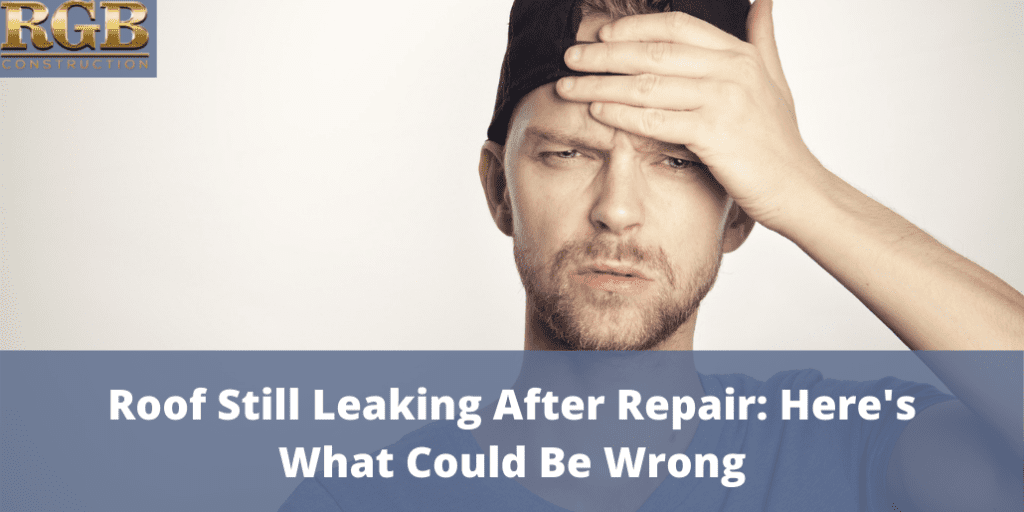
Possible Reasons for Roof Leak Persistence
Incomplete or Shoddy Repair Work
If your roof continues to leak after a previous repair, it could be due to incomplete or shoddy repair work. If the underlying issue was not adequately addressed or if the repair was not performed correctly, the leak may persist. It is essential to hire a reputable and experienced roofing professional to ensure that repairs are done correctly.
Hidden or Hard-to-Detect Leaks
Some roof leaks can be difficult to detect, especially if they occur in hard-to-reach areas or if they are small and intermittent. These hidden leaks can continue to cause damage even after repairs have been made. A thorough inspection by a professional roofer and the use of specialized equipment can help locate and address these hidden leaks.
Structural Damage
If your roof has suffered significant structural damage, such as from a fallen tree or severe weather event, it may be challenging to stop the leaks completely. In these cases, repairs may only provide temporary relief, and a roof replacement may be necessary to ensure a long-term solution. Consulting with a professional roofer can help determine the best course of action.
Ongoing Weather Conditions
Roof leaks can be exacerbated by ongoing or severe weather conditions. If you live in an area prone to heavy rainfall, strong winds, or extreme temperature fluctuations, your roof may be more susceptible to leaks. Regular maintenance and proactive measures, such as reinforcing vulnerable areas, can help mitigate the impact of these weather conditions on your roof.
Improper Roof Design or Construction
A poorly designed or constructed roof can be prone to leaks. Issues such as inadequate slope, improper flashing installation, or insufficient ventilation can create vulnerabilities that allow water to enter your home. In such cases, it may be necessary to consult with a roofing professional to assess the roof’s design and potentially make modifications to prevent future leaks.
Inadequate Roofing Materials
Using subpar or inferior-quality roofing materials can contribute to persistent roof leaks. Low-quality shingles, underlayment, or flashing can fail prematurely and compromise the roof’s waterproofing capabilities. It is essential to choose high-quality materials from reputable manufacturers and ensure proper installation to prevent leaks.
Poor Ventilation
Inadequate roof ventilation can trap moisture in your attic and contribute to roof leaks. Proper airflow and ventilation help regulate temperature and prevent excessive moisture buildup. If your roof lacks proper ventilation, it may be necessary to install additional vents or make modifications to improve airflow and reduce the risk of leaks.
Improper Flashing Installation
As mentioned earlier, flashing is a critical component of your roof’s waterproofing system. If the flashing is improperly installed or not maintained correctly, it can lead to persistent leaks. Ensuring that flashing is correctly installed, regularly inspected, and promptly repaired or replaced when necessary can help prevent ongoing roof leaks.
Foundation Issues
In some cases, persistent roof leaks may be a result of underlying foundation issues. If your home’s foundation is not stable or has suffered damage, it can cause shifts in the structure, leading to gaps or misalignment that allows water to seep in through the roof. Addressing foundation issues may be necessary to resolve the ongoing roof leak problem.
Improper Drainage System
A poorly designed or inadequate drainage system can contribute to roof leaks. If water is not effectively directed away from your roof, it can accumulate and penetrate vulnerable areas. Ensuring that your property has a proper drainage system and that gutters and downspouts are clear and functioning correctly can help prevent the persistence of roof leaks.
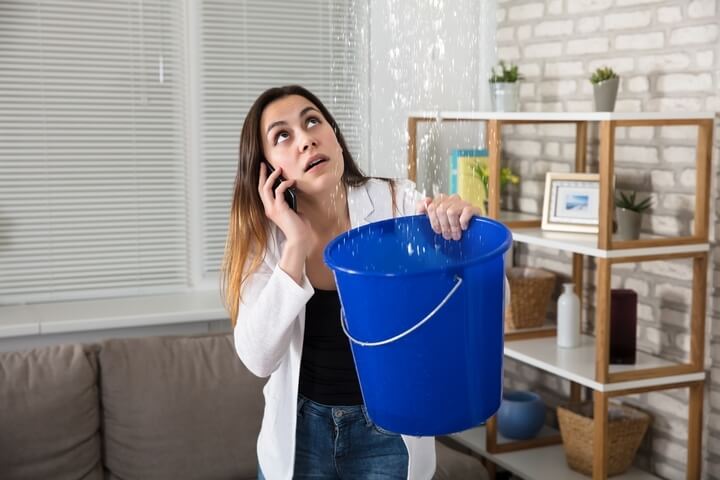
Steps to Fix a Persistent Roof Leak
Identify the Source of the Leak
The first step in fixing a persistent roof leak is to identify its source. This may require a thorough inspection of your roof, attic, and any visible signs of water damage inside your home. Hiring a professional roofing contractor with experience in leak detection can help pinpoint the exact location of the leak.
Inspect the Attic
Once you have identified the general area of the leak, it is crucial to inspect the attic carefully. Look for signs of water intrusion, such as damp spots, water stains, or mold growth. Pay attention to the area directly above the visible signs of water damage as this is likely the source of the leak.
Repair the Damage from Inside the Attic
If the leak can be accessed from inside the attic, you can begin repairing the damage. This may involve patching or replacing damaged insulation, sealing any gaps or cracks, and addressing the source of the leak. Follow any manufacturer guidelines or consult with a professional to ensure proper repairs.
Address External Roofing Issues
Once you have addressed the damage from inside the attic, it is essential to tackle any external roofing issues contributing to the persistent leak. This may involve replacing missing or damaged shingles, repairing or replacing flashing, addressing chimney or skylight issues, or fixing any other identified vulnerabilities.
Replace Damaged Roofing Materials
If your roof continues to leak despite repairs, it may be necessary to replace damaged roofing materials. This can include shingles, underlayment, flashing, or any other components that are compromised. Hiring a professional roofing contractor is recommended to ensure a proper and thorough replacement.
Reapply Sealant or Caulk
To further strengthen your roof’s waterproofing capabilities, consider reapplying sealant or caulk to susceptible areas. This can help seal any gaps or cracks and provide an additional layer of protection against water intrusion. Use high-quality sealant or caulk recommended for your specific roofing materials.
Improve Roof Ventilation
Inadequate roof ventilation can contribute to persistent roof leaks. Consider installing additional vents or making modifications to improve airflow and reduce moisture buildup in your attic. Proper ventilation can help prevent future leaks and improve the overall health and longevity of your roof.
Regular Roof Maintenance
Prevention is key to avoiding persistent roof leaks. Implementing a regular roof maintenance routine can help identify and address potential issues before they escalate into leaks. Schedule annual inspections, clear gutters regularly, trim overhanging branches, and address any minor repairs promptly.
Seek Professional Help
If you have attempted to fix a persistent roof leak but have been unsuccessful, it may be time to seek professional help. Consulting with an experienced roofing contractor can provide valuable expertise and guidance in finding a solution to your roof leak problem. They can conduct a thorough inspection, perform necessary repairs, or recommend a roof replacement if needed.
Consider Roof Replacement
In some cases, a persistently leaking roof may be beyond repair, especially if the underlying issues are extensive or if the roof has reached the end of its lifespan. If repairs have been unsuccessful, consulting with a professional about a roof replacement may be the best course of action. A new roof can provide a long-term solution and peace of mind.
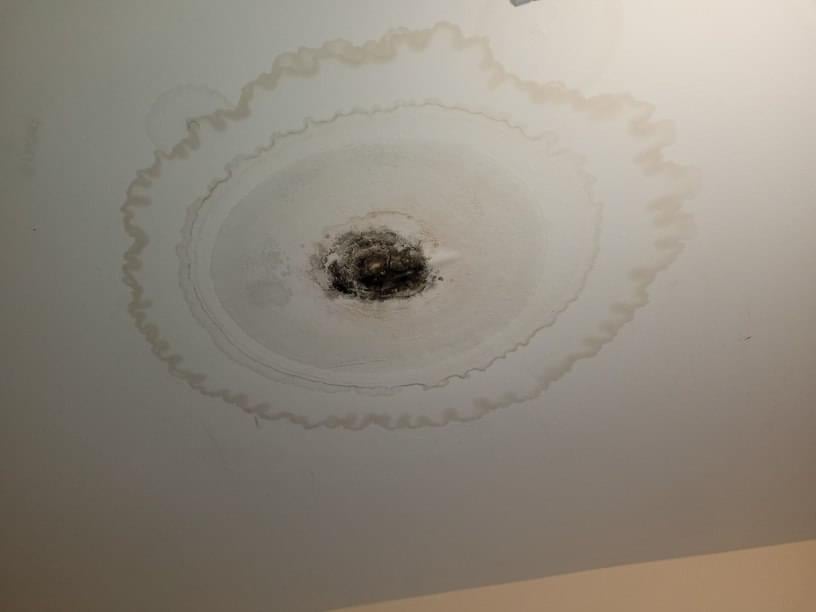
Preventing Future Roof Leaks
Regular Roof Inspections
To prevent future roof leaks, regular inspections are essential. Schedule annual or biannual inspections to identify and address any potential issues before they become leaks. Consider hiring a professional to conduct a thorough inspection, especially if you are not comfortable performing it yourself.
Proper Maintenance
Regular roof maintenance is crucial in preventing leaks. Clear gutters and downspouts, remove debris from the roof surface, and address any minor repairs promptly. Keeping your roof in good condition can help extend its lifespan and minimize the risk of leaks.
Immediate Repairs
If you notice any signs of damage or vulnerability, such as loose shingles, damaged flashing, or compromised vents, address them immediately. Prompt repairs can prevent minor issues from escalating into costly leaks. Remember to consult with a professional if you are unsure about the extent of the damage or the repair process.
Use High-Quality Materials
Investing in high-quality roofing materials can significantly reduce the risk of future leaks. Choose shingles, underlayment, flashing, and other components from reputable manufacturers known for their durability and reliability. High-quality materials may have a higher upfront cost but can save you money in the long run by preventing leaks and reducing the need for frequent repairs.
Appropriate Roof Design and Installation
Ensure that your roof has an appropriate design and installation for your specific geographic location and weather conditions. Factors such as slope, drainage, and ventilation should be taken into consideration during the design and construction phase. Hiring a professional roofing contractor with experience in your area can help ensure a roof that is resilient against leaks.
Address Drainage Issues
Good drainage is essential to prevent leaks. Ensure that your property has proper grading to direct water away from your home, and consider installing a well-functioning gutter and downspout system. Regularly clean and maintain gutters to prevent clogs and overflowing, which can lead to leaks.
Installation of Proper Flashing
Flashing is a critical component of your roof’s waterproofing system. Ensure that flashing is properly installed in all vulnerable areas, such as vents, chimneys, and skylights. Regularly inspect flashing for any signs of damage or deterioration and address issues promptly to maintain a watertight roof.
Proper Attic Insulation and Ventilation
An adequately insulated and ventilated attic can help prevent moisture buildup and subsequent roof leaks. Ensure that your attic has sufficient insulation to regulate temperature and prevent condensation. Additionally, proper ventilation helps remove excess heat and moisture, reducing the risk of leaks.
Trim Overhanging Branches
Overhanging branches can pose a threat to your roof’s integrity. Trim branches that are in close proximity to your roof to prevent potential damage from falling branches and rubbing against the roof surface during windy conditions. This proactive measure can prevent leaks and reduce the risk of other roof-related issues.
Avoid DIY Repairs – Hire Professionals
While it may be tempting to attempt DIY repairs, it is advisable to hire professionals for any roof-related work. Roofing can be dangerous, and improper repairs can lead to more significant issues and additional leaks. Experienced roofing professionals have the knowledge, skills, and tools to perform repairs and maintenance correctly, ensuring the longevity and integrity of your roof.
In conclusion, persistent roof leaks can be frustrating, but with proper understanding of common causes, timely repairs, and proactive maintenance, they can be prevented and resolved. Regular inspections, prompt repairs, and the use of high-quality materials are vital in maintaining a watertight roof. Remember, when it comes to roofing, it is important to prioritize safety and seek professional help when needed.
